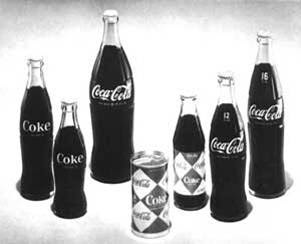
Los seres humanos han ido desarrollando actividades y se han preocupado constantemente por crear los objetos que le faciliten su trabajo, su vida familiar, su transporte, y en suma todas las actividades que realizan solos o en comunidad. En el transcurso del tiempo se han realizado grandes avances y muchos de estos objetos diseñados y creados por el hombre han contribuido con el cambio de las estructuras sociales y económicas existentes.
Nuestra época no ha sido una excepción en este proceso, tampoco lo serán las futuras generaciones. Dentro de nuestro país el Diseño Industrial es una actividad que no se realiza como profesión académica, pero tiene dentro del ámbito de la producción individuos que se ocupan de la parte técnica de los productos, otros de su parte estética, otros de su envase y así tenemos todo un conjunto de personas (muchas de ellas profesionales de la ingeniería) que se dedican, en un esfuerzo común, a la creación de productos.

Esta situación ha motivado la necesidad de un profesional que oriente el proceso de diseño de productos hacia la creación de los objetos tomando en cuenta conocimientos técnicos y artísticos, dando estilo y ajustando el producto a las actitudes y necesidades del consumidor. Este profesional debe también ser una persona práctica con buenos conocimientos de costos y métodos de producción, pasando por el envasado o empaque, diseño interior y exterior, terminando en su comercialización.
Cuando se habla de que el Diseñador Industrial puede hacer trabajos y diseños de productos a muchas organizaciones no nos referimos solamente a aquellas meramente industriales como fábricas de equipos, maquinarias, mobiliario, electrodomésticos, productos plásticos, envases de vidrio, equipos de oficina, etc., sino también a otros renglones menos comerciales donde el Diseño Industrial tiene una importancia social y funcional de primer orden como son:
Educativo: diseño de mobiliario para las escuelas,material didáctico, juguetes educativos, etc.
Salud: equipo de laboratorio, equipo quirúrgico, equipos móviles de servicios médicos básicos, aparatos médicos y demás.
Urbano: mejoramiento de sistemas de servicios como alcantarillado, eléctrico o de basura, diseño de mobiliario para las calles, diseño de viviendas prefabricadas a un menor costo, sistemas más efectivos de señalización, etc.

Artesanal: rediseño de objetos artesanales tradicionales, introducción de nuevos productos de interés local o turístico en esta área.
Exportación: diseño de productos para la exportación que tengan en cuenta controles de calidad, exigencias y preferencias del mercado internacional que podrían aumentar el ingreso de divisas al país. Este pequeño listado de posibilidades nos demuestra el impacto que potencialmente el Diseño Industrial puede tener en nuestro país.
Relación Universidad-Sociedad:

Por Diseñador Industrial se entiende un profesional de alto nivel académico, técnico y cultural, consciente de la magnitud y complejidad del problema "necesidad-producción-consumo-uso", y capaz de integrarse, comunicarse y coordinar un equipo polivalente de profesionales que debe de intervenir en el proceso "diseño-mercado-evaluación", como respuesta al problema del diseño de productos. A través de dicho proceso, el diseñador debe contemplar e involucrar en la solución de su diseño todos los aspectos funcionales, técnicos, económicos, culturales y estéticos que definen a los objetos producidos industrialmente.
Podemos agrupar los aspectos mencionados, viéndolos desde el punto de vista de la relación universidad-sociedad como sigue:
Contribuir al desarrollo del país mediante la formación de profesionles capaces de afrontar los problemas de la producción industrial dentro de un marco teórico-práctico del diseño.
Responder al clima de aceptación de la bondad e importancia del diseño.
Desde el punto de vista de la formación profesional.
Partiendo de la realidad de que un país en vías de desarrollo como la República Dominicana no puede darse el lujo de formar profesionales super-especializados, se propone un diseñador industrial integral, o sea, un profesional capaz de asesorarse para resolver los problemas diversos que le competen dentro del campo de la producción en serie en cualquiera de sus ramas. Esta preparación, desde ese punto de vista nos proporcionará:
Un diseñador capaz de integrarse a la industria nacional, con ideas renovadoras y planteamientos que permitan el logro de soluciones de diseño acordes con las necesidades y posibilidades técnicas, sociales, económicas y culturales de nuestro país.
Estimular las capacidades creativas de los alumnos y orientarlos hacia el uso racional de las posibilidades técnicas y de equipos o de maquinarias, y de las disponibilidades de materias primas y mano de obra existentes en el país que permitan el desarrollo de una tecnología propia, sin perder de vista el contexto universal.

Considerar el proceso de formación de los profesionales del diseño como un enriquecimiento mutuo entre alumnos-profesores-facultad-industria-sociedad, que conlleve la aplicación dinámica del objetivo general de la universidad.
Crear conciencia sobre el papel y la responsabilidad del diseñador frente a la comunidad en que desarrolla su función, sin obviar los aspectos éticos y culturales.
Objetivo General
El objetivo de la Carrera de Diseño Industrial es formar un profesional capaz de diseñar, mejorar, utilizar, solucionar y poner en marcha proyectos de diseño de productos en las empresas, industrias y factorías, comprendiendo sus procesos técnicos desde la planeación hasta la comercialización, usando las herramientas de las ciencias de la ingeniería y el diseño.

El diseño industrial en Republica Dominicana:
En República Dominicana esta actividad se vio por primera vez cuando el INTEC creo el CID ( Centro de Investigación del Diseño ) en el ano 1985, que fue fruto de una investigación hecha por la misma institución llamado “Estudio Industrial sobre la República Dominicana”. Unos anos más tarde, debido a la expansión física y académica del INTEC, este propuso el diseño industrial como uno de los nuevos programas de estudio.
Como asesor para este tema utilizaron al Arq. Rómulo Polo, quien era el director de la escuela de diseño industrial en una universidad Colombiana. Este elaboro varios informes y un documento llamado “Diseño: una opción de desarrollo” en el cual se evaluaba la industria dominicana y donde se exponían las razones por la cual debía de implementarse este programa de estudio.
También explicaba que había que formar docentes para impartir las clases y debido a esto INTEC concedió 3 becas estudiantiles para la formación de docentes en el área del diseño. Mientras tanto, el Arq. Jesús Villeta, quien seria asesorado por un diseñador industrial llamado Gerd Schussler. Este trabajo junto con el Arq. Villeta por dos anos en el Centro de Diseño Industrial.
Los becarios regresaron en el ano 1987 para conformar un equipo de trabajo con Villeta y un asesor recién llegado, también diseñador industrial, llamado Gunther Daunen. De los tres becarios solo uno se integro en el INTEC como docente, esta siendo la Arq. Margarita Rodríguez.
Las primeras asignaturas se impartieron en el 1989, en donde los docentes eran los mismos integrantes antes mencionados, de cuales solo el asesor Daunen había ejercido la profesión y había sido docente. Con este asesor se formaron los primeros docentes por los primeros siete anos de la escuela de diseño.
Los primeros egresados concluyeron sus estudios en el 1991. Para este tiempo también se conservaba el CID que servía para promocionar la carrera y para consolidarla en el medio industrial.
Mas tarde en la década, la Universidad Autónoma de Santo Domingo (UASD) creo una escuela de diseño industrial y de moda, la cual tiene una licenciatura en diseño industrial de productos, asimismo como varia carreras técnicas relacionadas con el diseño industrial.
Los dos programas son bastantes parecidos, solo que el pensum del INTEC tiene 228 créditos, mientras que el de la UASD tiene 175 créditos. No obstante a eso, el pensum de la UASD tiene materias que no están incluidas en el de INTEC, como son los talleres de cerámica, que consta de dos secciones, asimismo como Introducción a la psicología industrial, que no esta incluida. También, el pensum de la Universidad autónoma esta muy enfocado en productos artesanales y esoto se puede ver en las materias como la del Taller artesanal y los talleres de cerámica antes mencionados.
También se diferencian en que el programa del INTEC se divide en trece trimestres, mientras que el de la UASD esta constituido por ocho semestres.
Según el ultimo estudio que hizo el CID en el 2005, en la actualidad hay 95 egresados de la carrera de diseño. De estos el 92% trabajan en la actualidad pero solo el 48% trabaja en areas relacionadas con el diseño. Les sigue un 28% que trabaja en el área de mercadeo y venta. De los que trabajan en diseño, solo el 68% trabaja en diseño industrial. De este porciento, un 68% trabaja como empleado de una empresa y el resto en un estudio propio.
El 34% que resta trabaja en otras áreas relacionadas con el diseño como el diseño de interiores, gráficos, publicidad y animación.
De la muestra total de los egresados, el 66% hizo estudios de posgraduado. De estos, alrededor de un 60% lo hizo a nivel de maestría. El 64% hizo sus estudios de posgraduado en el área de negocios, mientras que solo un 16% hizo su maestría en diseño industrial, un 12% en estudios de diseño en general y el restante tomo la ingeniería como especialización.
Como se puede ver, la mayoría de los egresados opto por tomar sus estudios de posgraduado en el área de negocios, esto debido a que la mayoría de las universidades locales ofrecen muchos programas de maestrías en el área de negocios mientras que los egresados que pudieron realizar estudios de maestrías en diseño industrial lo hicieron fuera del país ya que ninguna de las universidades locales ofrecen esta especialización a nivel de maestría.

Universidades que imparten el Diseño Industrial en Republica Dominicana.Intec: Instituto Tecnologico de Santo Domingo.

UASD:UNIVERSIDAD AUTÓNOMA DE SANTO DOMINGO.

Ejemplos de Oferta de Trabajo en Republica Dominicana.Empleos Diseño Industrial 1 - 5 de 5
TECNICO DE DISEÑOConfidencial
305-04
Santo Domingo
Diseño Industrial
22 a 40
Realizar diseños industriales gráficos a productos. Dibujante Industrial. Manejo de Autocad. Experiencia en empresa del area de la construcción. Estudiante de término o graduado de Arquitectura, Di [...] Otras áreas: Arquitectura, Construcción
Marketing Manager
Diseño Industrial
Edad n/d
Manage web researchers, provide progress reports to owner. Proficient in English. Salary plus commissionsOtras áreas: Comunicación, Publicidad, Medios
Senior Lead Designer (Drafter)Eaton CorporationDiseño Industrial
Edad n/d
Preparar dibujos o un completo diseño de Layout a través de instrucciones verbales o escritas para productos complejos y equipos. Interpretar y crear dibujos de layoutsy dibujos de materias primas, p [...] [ Salario Competitivo ]Otras áreas: Ingeniería Electrónica
AYUDANTE DE SERVICIOS INDUSTRIALES·
Diseño Industrial
18 a 25
SEXO MASCULINO DE 18-25 AÑOS. PUEDE SER ESTUDIANTE RECIEN GRADUADO DE ITESA, U OTRA INSTITUCION TECNICA. TECNICO EN ING.MECANICA,INDUSTRIAL, ELECTRICA O ESTUDIANTE DE ING. BUEN RECORD DE NOTAS. MA [...] [ Salario ATRACTIVO ]Otras áreas: Ingeniería Mecánica
Diseñador de EmpaquesDiseño Industrial
22 a 35
Responsable de diseñar los empaques de los productos para los proyectos de innovación (temporal- 8 meses). -Manejo de Corel, Illustrator, Autocad, Photoshop y/o Freehand -Experiencia en Diseño de Emp [...] (Clave/s : diseño de empaques - todas)

























































